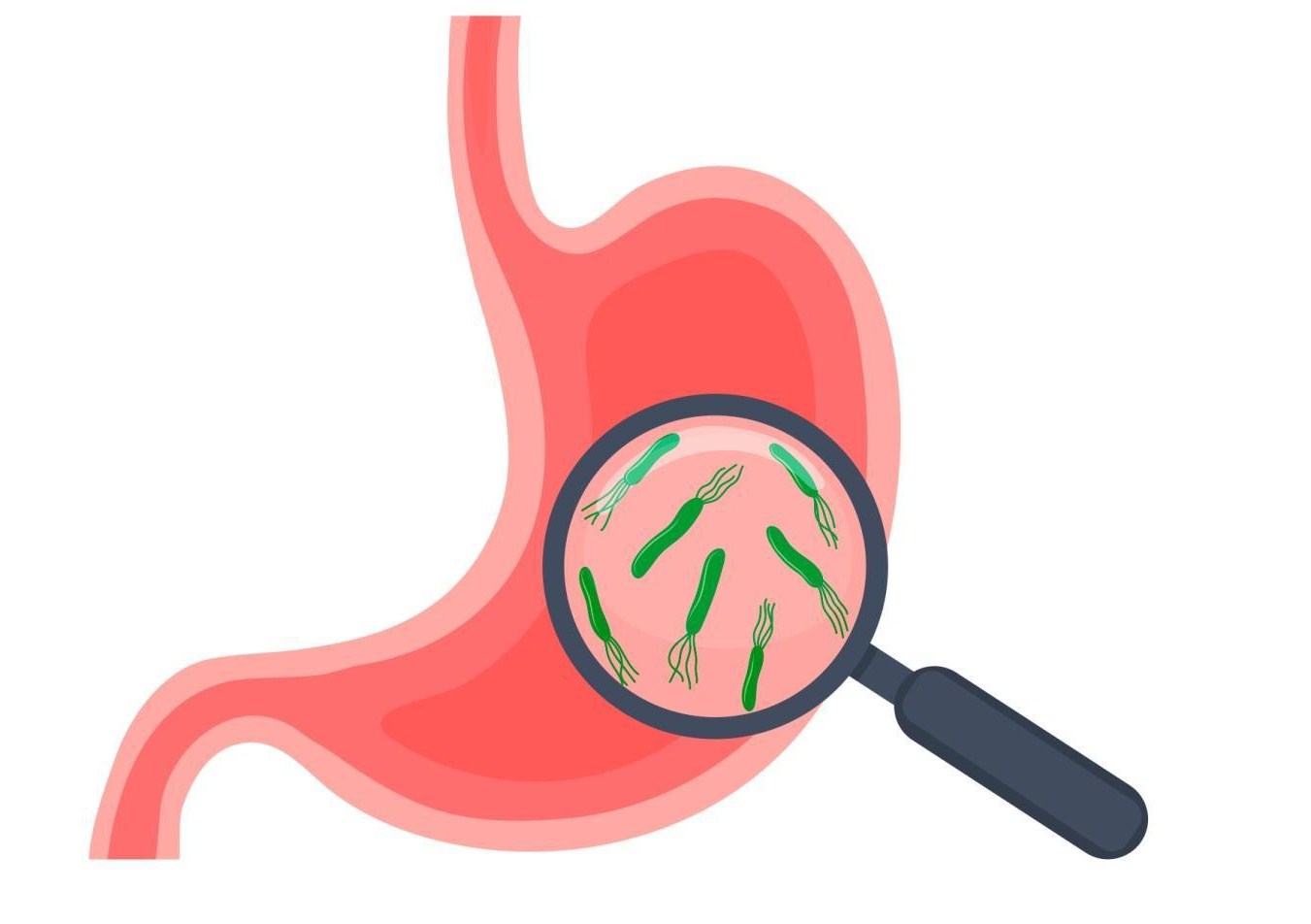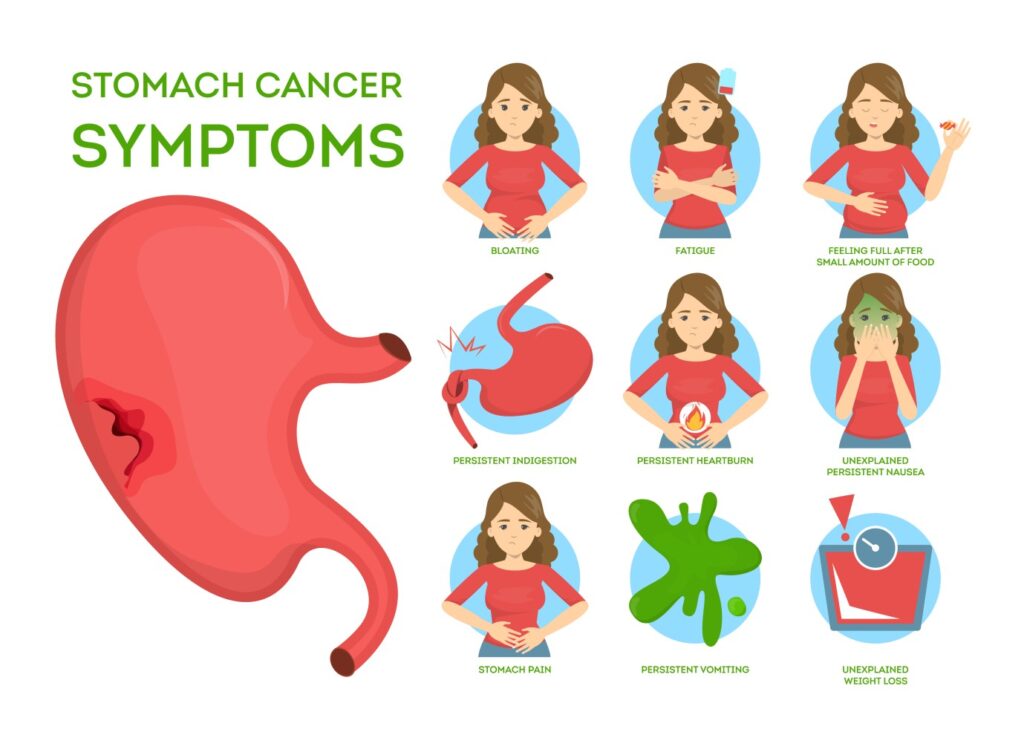What can go wrong in the digestive tract?

The alimentary canal or gastrointestinal/digestive tract runs from the mouth to the anus, including the oesophagus, stomach and intestines. This is the pathway where food enters the body and solid wastes are gradually expelled.
How do you check for infection in the stomach?
Helicobacter pylori (H.pylori) is a type of bacteria. It can cause ulcers in the stomach and duodenum. For some people, if infection with H. pylori is not detected or treated, this may lead to inflammation of your stomach lining (gastritis), stomach ulcers and possibly stomach cancer. Up to 80% of stomach cancers have been attributed to H. pylori infection.
H.pylori is one of the commonest long-term bacterial infections worldwide, affecting up to 50-70% in some parts of the world. In Singapore, it has been estimated that 31% of the population has been infected by H.pylori. H.pylori can enter your body
and live in your digestive tract for years before symptoms start. It attacks the lining of your stomach that usually protects you from the acid used to digest food. Once H. pylori have done enough damage, acid can get through the lining, which leads to stomach ulcers. Ulcers left untreated for a long period of time can eventually turn into stomach cancer. If H.pylori bacteria is the only culprit; a course of medication is sufficient to put an end to the problem.
How to detect stomach cancer?
Gastroscopy is the most common way to detect any abnormalities within the stomach. During the procedure, a thin flexible tube with a small light and video camera is inserted through the mouth, until it reaches the duodenum. The inner linings of the oesophagus, stomach and first part of your small intestine (duodenum) will be inspected for any irregularities. It is connected to a screen that allows the specialist to evaluate any abnormalities seen along the way. During the procedure, you will be given sedation. If there are polyps or abnormalities detected, it will be removed. The specialist will also check for any presence of Helicobacter pylori bacteria.

Other options include a barium meal x-ray. This is a radiological procedure. During the examination, the patient swallows a liquid containing barium. X ray pictures are then taken of the outline of the stomach wall. If there is a tumour, a biopsy is used to confirm the presence of cancer cells. Once cancer is confirmed upon biopsy, other tests such as CT scan will be carried out to assess the extent of cancer spread. A gastroscopy is usually more accurate in diagnosing stomach cancer than the barium meal X-ray and can be performed in the same sitting as a colonoscopy. Some patients opt to schedule and have both procedures within a single day.
What are the benefits of gastroscopy?
A gastroscopy is performed to examine the alimentary tract and diagnose conditions like stomach cancer, gastritis or peptic ulcers. Detection of stomach cancer in an early stage can be curable with better outcomes. It may also be performed to treat conditions, such as bleeding ulcers, non-cancerous or cancerous growth or tumours.
What are the differences between a diagnostic gastroscopy and a therapeutic gastroscopy?
A diagnostic gastroscopy is performed to check for symptoms, biopsy and any abnormalities, or confirm a diagnosis of oesophagus, stomach or duodenal cancer. It can also be used to check the presence of Helicobacter Pylori bacteria. If the results come back as positive, we will give you antibiotics for treatment.
A therapeutic gastroscopy is used to treat a condition or disease related to the alimentary tract. Most commonly it is used to stop bleeding ulcers in the stomach or duodenum. If there is any narrowing in the oesophagus, stomach, or duodenum, there can be options used to open up the narrowing using advanced endoscopic techniques.
How long will the procedure take?
Generally, a gastroscopy takes about 10-15 minutes. If there are polyps to be removed or abnormalities detected, it may take longer. Any polyps seen will be removed immediately and sent to the laboratories. However, a therapeutic gastroscopy may take longer as it may involve injection of medications, application of endoscopic clips, electrocautery to stop bleeding.
What if I am diagnosed with stomach cancer?
Surgery is considered the treatment of choice for stomach cancer. If the tumour growth has not spread to other organs, part or whole of the stomach and the surrounding lymph glands are removed via open or laparoscopic (keyhole) surgery.
Standard open surgery requires a long incision on the abdomen. Surgery involves the removal of a part or total removal of the stomach together with its blood supply and lymph nodes. The small bowel is then used to join back to the remaining stomach or oesophagus to restore continuity of the digestive tract. The average hospital stay is about 1 to 2 weeks depending on the patient’s recovery.
Whereas in laparoscopic (keyhole) surgery, the procedure uses small keyhole incisions on the abdominal wall, and the operation is performed using specialised long instruments and a surgical camera. The operative steps are similar to open surgery with the following advantages:
- The average hospital stay can be less than 1 week, depending on the patient’s recovery.
- Smaller wounds and quicker recovery period
What is a colonoscopy?
In colonoscopy, a long thin flexible tube with a small light and camera at the end is inserted through the anus and rectum until the caecum (beginning of the colon). It is connected to a screen that allows the doctor to evaluate any abnormalities seen along the way. If you have a family history of colorectal cancer, it may be prudent to have the procedure as the risk of developing colorectal cancer is more likely.
Colonoscopy evaluates the colon and rectum using the same method as a gastroscopy, a long thin flexible tube with a light and video camera attached to it. It can pick up polyps and remove them before they turn into colorectal cancers. Picking up abnormalities also leads to better outcomes.
A gastroscopy can be done in the same sitting as a colonoscopy.


